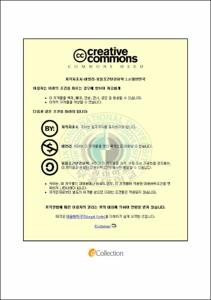Performance of Seaweed Biofiltration in A Small-Scale Recirculating System
- Alternative Title
- 소규모 순환여과 시스템에서 해조류를 이용한 생물여과의 성능
- Abstract
- A small-scale recirculating system with three seaweeds (Enteromorpha compresa, Ulva pertusa, Sargassum piluliferum) as biofilters was designed to measure biofiltration performance. The system used 9 small aquaria (23 L) for seaweed biofilter reactor (triplicates) and 1 small aquarium (23 L) as a control. Two reservoirs (288 L and 500 L) and submersible pump also were used to maintain water recirculating system which also maintain flow rate on the aquaria at 1.095 L min-1. Artificial wastewater was used as nutrients for seaweed and 1 peristaltic pump was controlled to supply it into system. Ammonia loading rate on the system was 20 and 50 g TAN m-3 d-1. The photoperiod was 12 h light:12 h dark and irradiance was 100 μmol photons m-2 s-1. The water temperature regimes on the system were 10oC and 15oC. Ammonium, nitrate, nitrite and phosphate were determined between inflow and outflow on each aquarium daily. The experimental period was 15 days for each treatment (two different water temperatures and two different ammonia loading rate).
The results showed that nutrients concentration of effluents between the control and three seaweeds reactor are significantly different (p≤0.05), except on nitrite. Nutrient uptake rates and biofiltration efficiencies of ammonium by E. compresa, U. pertusa, and S. piluliferum on this research are 55.85-68.07 μM NH4+ g-1 FW d-1 (26.65-89.66%), 42.14-50.98 μM NH4+ g-1 FW d-1 (20.68-67.98%) and 27.47-34.32 μM NH4+ g-1 FW d-1 (13.18-46.24%), respectively. Nutrient uptake rates and biofiltration efficiencies of nitrate-nitrogen by E. compresa, U. pertusa, S. piluliferum in this experiment are 10.73-22.99 μM NO3-N g-1 FW d-1 (17.77-52.26%), 13.57-21.29 μM NO3-N g-1 FW d-1 (17-50.48%) and 12.24-19.30 μM NO3-N g-1 FW d-1 (14.88-46.62%), respectively. In this research, nutrient uptake rates and biofiltration efficiencies of nitrite-nitrogen by E. compresa, U. pertusa, S. piluliferum are 0.19-0.22 μM NO2-N g-1 FW d-1 (5.36-12.26%), 0.18-0.28 μM NO2-N g-1 FW d-1 (4.78-11.32%) and 0.17-0.27 μM NO2-N g-1 FW d-1 (4.60-11.63%), respectively. Thus, nutrient uptake rates and biofiltration efficiencies of orthophosphate by E. compresa, U. pertusa, and S. piluliferum are 1.16-2.41 μM PO43- g-1 FW d-1 (29.62-81.74%), 0.69-1.82 μM PO43- g-1 FW d-1 (16.70-65.15%) and 0.75-1.22 μM PO43- g-1 FW d-1 (14.72-45.23%), respectively.
Furthermore, the volumetric ammonia removal rates by these seaweeds also higher than biofilm and RBC biofilter but on nitrate is lower than activated sludge reactor due to another research.
According to these results, it can be stated that E. compresa shows the better biofiltration performance than U. pertusa and S. piluliferum and also has a chance to be prime candidate as biofilter to maintain mariculture ponds effluent or will be used in seawater recirculating system at 10-15oC of water temperatures.
- Issued Date
- 2008
- Awarded Date
- 2008. 8
- Type
- Dissertation
- Keyword
- 소규모 순환여과 시스템 해조류 생물여과
- Publisher
- 부경대학교 대학원
- Alternative Author(s)
- 릴릭 터구흐 팜부디
- Affiliation
- 부경대학교 대학원
- Department
- 대학원 수산생물학과
- Table Of Contents
- I. INTRODUCTION = 1
II. MATERIALS AND METHODS = 4
1. System design = 4
2. Seaweeds tested = 4
3. Experimental procedure = 6
4. Water sampling = 7
5. Methods of water quality measurements = 7
Nutrients uptake rates = 8
Biofiltration efficiency = 8
Volumetric nutrient removal rates = 8
6. Biological Measurements = 9
6.1. Specific growth rates = 9
7. Statistical analysis = 9
III. RESULTS = 11
1. Treatment I : Ammonia loading rate of 20 g m^(-3) d^(-1) at 10℃ = 11
1.1. Condition during experiment = 11
1.2. Nutrient concentrations = 11
1.3. Nutrient uptake rates and biofiltration efficiencies = 16
1.4. Volumetric nutrient removal rates = 16
2. Treatment II : Ammonia loading rate of 20 g m^(-3) d^(-1) at 15℃ = 17
2.1. Condition during experiment = 17
2.2. Nutrient concentrations = 17
2.3. Nutrient uptake rates and biofiltration efficiencies = 22
2.4. Volumetric nutrient removal rates = 22
3. Treatment III : Ammonia loading rate of 50 g m^(-3) d^(-1) at 10℃ = 23
3.1. Condition during experiment = 23
3.2. Nutrient concentrations = 22
3.3. Nutrient uptake rates and biofiltration efficiencies = 28
3.4. Volumetric nutrient removal rates = 29
4. Treatment IV : Ammonia loading rate of 50 g m^(-3) d^(-1) at 15℃ = 30
4.1. Condition during experiment = 30
4.2. Nutrient concentrations = 30
4.3. Nutrient uptake rates and biofiltration efficiencies = 35
4.4. Volumetric nutrient removal rates = 35
5. Specific growth rates = 36
IV. DISCUSSION = 38
1. Condition during experiments = 38
2. Nutrient concentrations = 38
3. Nutrient uptake rates and biofiltration efficiencies = 40
4. Comparison of volumetric nutrient removal rates and efficiencies = 43
5. Specific growth rates = 47
V. CONCLUSION = 49
ACKNOWLEDGEMENTS = 50
REFERENCES = 51
- Degree
- Master
- Files in This Item:
-
-
Download
 Performance of Seaweed Biofiltration in A Small-Scale Recirculating System.pdf
기타 데이터 / 1 MB / Adobe PDF
Performance of Seaweed Biofiltration in A Small-Scale Recirculating System.pdf
기타 데이터 / 1 MB / Adobe PDF
-
Items in Repository are protected by copyright, with all rights reserved, unless otherwise indicated.